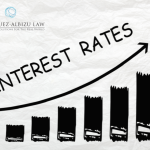The federal Coronavirus Aid, Relief, and Economic Securities Act (the “CARES Act”) was signed into law on March 27, 2020. The CARES Act provides funding for the Paycheck Protection Program loans (“PPP”).
Below are some key considerations for companies that are seeking or obtaining PPP loans.
Current Status of the Program
Although the SBA began accepting applications on April 3, the program got off to a rocky start because many financial institutions were not yet ready to begin processing applications. The SBA has been issuing guidance on a rolling basis, addressing matters such as defining payroll costs and affiliate rules. Various public comments about the PPP suggested that the PPP would be over-subscribed and loans would be processed on a first-come, first-served basis, which caused enormous pressure and demand on the opening day. The President then signed into law a bill on April 24, 2020 providing additional funding to the PPP. That funding, however, also is not expected to last long.
The 75/25 Rule
Companies will have to apply for forgiveness and provide documentation verifying that the loan was used for acceptable purposes. At least 75% of the PPP loan must be used for payroll costs and the remainder must only be used for qualifying non-payroll costs following the 8-week period from the date of the loan. The other 25% may be used for interest on mortgage, rent, and utilities as long as those obligations existed prior to February 15, 2020. The loan proceeds may also be used to pay for other benefits reflected on payroll such as paid sick leave, vacation, retirement benefits, and healthcare coverage. It is important to note that the tax benefit of loan forgiveness is that any amount forgiven that would ordinarily be included as gross income for federal tax purposes is excluded from gross income.
Laid Off Employees
If a company lays off employees, the forgiveness amount will be reduced by the percent decrease in the number of employees. If total payroll expenses on workers making less than $100,000 annually decreases by more than 25%, the loan forgiveness amount will be reduced by the same amount. If the company has already laid off some employees, the full amount of the payroll cost can be forgiven if the company rehires the employees by June 30, 2020.
If you do not apply for forgiveness and use the loan for these purposes you will have to pay back the loan.
The Cap on Employee Compensation
Guidance from the Treasury Department has been ambiguous as to how to interpret the cap on employee compensation. What is clear is that an employee’s cash compensation is capped at $100,000 for purposes of the loan program. What is less clear is how to treat benefit payments for an employee made by an employer, such as health insurance and retirement contributions. The PPP Information Sheet for Borrowers provides as follows:
Payroll costs include:
- Salary, wages, commissions, or tips (capped at $100,000 on an annualized basis for each employee).
- Employee benefits including costs for vacation; parental, family, medical, or sick leave; allowance for separation or dismissal; payments required for the provisions of group health care benefits including insurance premiums; and payment of any retirement benefit.
- State and local taxes assessed on compensation.
Elsewhere, however the Treasury Department seems to apply the cap to all payroll costs. Based on the inconsistency of the Treasury Department’s discussion of the cap throughout its published guidance, there continues to be uncertainty on how this will be treated.
The Affiliate Rule
The affiliate rule seemed simple in concept but has proven troublesome. Generally speaking, related parties are treated as a single entity for purposes of the PPP loan application. But this has been unworkable for certain entities such as religious institutions. For this reason, the Treasury Department issued additional guidance specifically exempting religious institutions from the coverage of the rule. Another problem in the affiliate rule relates to independent contractors. The concept is that independent contractors are supposed to be filing their own applications. However, the legal distinction between employees and independent contractors is an extremely tricky legal issue in certain situations and this will likely carry over into the processing of applications for the loan program.






